NeuroProtek® – Low Phenol – 60 softgels
$45.00
NeuroProtek Low Phenol® is a unique all natural oral dietary supplement in a soft gel capsule which may promote harmony in and between the mind and body. NeuroProtek Low Phenol® uses an exclusive combination of flavonoids and has lower milligrams of Quercetin and specifically Rutin (known to be high in phenols) than our original formula, NeuroProtek. NeuroProtek Low Phenol® is formulated to maximize effects of flavonoids while also overcoming any absorption obstacles. NeuroProtek Low Phenol® contains the flavonoids: Luteolin, Quercetin, and Rutin. Unique to Algonot’s family of formulations is olive kernel extract and flavonoids.
NeuroProtek® is a unique all natural oral dietary supplement in a soft gel capsule, which may reduce symptoms of gut and brain inflammation and nerve damage. NeuroProtek® uses an exclusive combination of flavonoids, based on the scientific research of Dr. Theoharides M.D., PhD, which have shown to reduce oxidative stress and inflammation both in the gut and the brain. NeuroProtek® is formulated to maximize the anti-inflammatory affects of flavonoids while also overcoming any absorption obstacles. NeuroProtek® contains the flavonoids: Luteolin, Quercetin, and Rutin. Unique to Algonot’s formulations is olive kernel oil, a powerful anti-oxidant that is instrumental in helping the body absorb and delivery the dry flavonoids found in each soft gel capsule. NeuroProtek® is free of the following allergens: artificial colors or dyes, flavors or sweeteners, corn, eggs, fish, heavy metals, milk/casein, peanuts, preservatives, salt, shellfish, starch, sugar, tree nuts, wheat/gluten and yeast. Our ingredients are not obtained from beef or beef by-products.
Flavonoids are natural molecules found mostly in green plants and seeds. Unfortunately, our modern life diet contains progressively fewer flavonoids and those that are consumed are difficult to absorb because they do not dissolve in water. Under these conditions, the average person cannot consume enough to make a positive health difference. There are approximately 3,000 flavonoids. Of those, NeuroProtek® contains three:
Luteolin (Chamomile > 95% Pure) is one of the three flavonoids found in NeuroProtek® . Luteolin was incorporated in this formula after published papers showed it is important in the body: as a free radical scavenger, an agent in the prevention of inflammation, an immune system modulator and it mimics a normal compound that protects nerve damage.
Quercetin (Saphora Plant > 95% Pure) is a natural non-acidic (flavanoid) with potent anti-inflammatory capabilities. Quercetin is added to NeuroProtek® to help relieve the swelling associated from inflammatory disease and protect from further damage associated with mast cell activation. The Quercetin used in NeuroProtek® is obtained from the saphora plant. Algonot decisively choose not to use the more common and less expensive source of fava beans, which could cause hemolytic anemia, particularly in people of Mediterranean origin.
Rutin (Saphora Plant > 95% Pure) is a glycoside of the flavonoid Quercetin. Like quercetin, rutin is extracted from the saphora plant and is a non-acidic natural flavonoid that adds additional anti-inflammatory qualities. Rutin helps liberate quercetin in the intestine, making absorption easier. Rutin has been shown to be the strongest antioxidant in studies.
Olive Kernel Oil (Unprocessed, MicroFiltered) Olive kernel oil is a potent low-acidic anti-oxidant that can help repair damaged tissues. This unique oil (a lipid) plays an important role in NeuroProtek® as it is used to increase the absorbability of these flavonoids. We use only virgin olive seed oil from the island of Crete.
While some benefit may be noticed shortly after starting NeuroProtek, it may take 6-12 months before measurable benefits are observed . NeuroProtek® does not require a prescription. NeuroProtek is not a cure. NeuroProtek is not an analgesic.
People considering using NeuroProtek should consult their doctor. Please print this information or request a packet of information to be sent to your doctor.
Trademarks and Patents Dr. Theoharides developed NeuroProtek® and is the recipient of US patents No. 6,624,148; 6,689,748; 6,984,667; 7,115,278 and EPO 1365777, which cover methods and compositions of mast cell blockers in neuroinflammatory conditions. All patents have been assigned to Theta Biomedical Consulting and Development Co., Inc. (Brookline, MA, USA) The name NeuroProtek® has been trademarked in the USA with US registration No. 3225924 and has also been assigned to Theta Biomedical Consulting and Development Co., Inc. (Brookline, MA, USA) Potential Conflict Dr. Theoharides is the Scientific Director of Algonot, LLC but receives no compensation. All clinical trials with this product are being conducted or will be conducted under the supervision of other clinicians at sites other that the Academic Medical Center where Dr. Theoharides works. 1
History of Development
Gut-Blood-Brain Barrier Disruption, Mast Cells and Brain Inflammation
In the majority of cases, the cause of autism is unknown. Although some possible autism susceptibility genes have been identified, no single or group of genes can explain the disturbing rise in the incidence of autism from 2 children out of every 100,000 only 20 years ago to 1 out of every 100 children presently. To date, research has focused on the behavioral and neurologic manifestations of autistic spectrum disorders instead of what led to them. In the development of NeuroProtek®, researchers hypothesized; autism starts when the protective gut-blood and blood-brain barriers break down either during pregnancy or early in life. Such a barrier disruption allows neurotoxic molecules to reach the brain ultimately resulting in inflammation and defective nerve processing. This premise is supported by the fact that at least 20% of autistic patients have antibodies against brain proteins, which implies that immune cells reached the brain through a leaky blood-brain-barrier. Recent research has also shown that mast cells (immune cells typically known for causing allergic reactions) can also be activated by environmental, infectious and stress triggers that lead to disruption of the blood-brain- barriers. One such mast cell trigger, neurotensin, was shown to be elevated in the serum of young children with autism. Mast cell activation during pregnancy or perinatally, in response to allergic or non-immune triggers, could disrupt the gut- blood-brain barriers and permit neurotoxic molecules to enter the brain and result in brain inflammation. Mast cell activation could be particularly critical during gestation, since mast cell- derived mediators might act epigenetically to alter the expression of autism susceptibility genes.
References
Theoharides TC, Spanos C, Pang X, Alferes L, Ligris K, Letourneau R, Rozniecki JJ, Webster E, Chrousos GP. Stress-induced intracranial mast cell degranulation: a corticotropin-releasing hormone-
mediated effect. Endocrinology. 1995 Dec;136(12):5745-50. Esposito P, Gheorghe D, Kandere K, Pang X, Connolly R, Jacobson S, Theoharides TC. Acute stress increases permeability of the blood-brain-barrier through activation of brain mast cells. Brain Res. 2001 Jan 5;888(1):117-127. Theoharides TC, Konstantinidou AD. Corticotropin-releasing hormone and the blood-brain-barrier. Front Biosci. 2007 Jan 1;12:1615-28. Theoharides TC, Doyle R. Autism, gut-blood-brain barrier, and mast cells. J Clin Psychopharmacol. 2008 Oct;28(5):479-83.
Mast Cells and Autism
The possible association between autism and mast cells was first investigated when research showed many symptoms that characterize patients with autism are also present in patients with mastocytosis, a spectrum of disorders that involve proliferation and activation of mast cells in the skin (urticaria pigmentosa, UP) and other organs. The Mastocytosis Society, Inc. (www.tmsforacure.org) together with the American Academy of Allergy, Asthma and Immunology recently produced a video, entitled “Mast Cell Activation Symptomatology” (available to physicians and patients), which highlights the fact that allergies may be only one aspect of mast cell activation. Preliminary research results indicate that the prevalence of autism in mastocytosis patients is 10- fold higher (1/10 children) than the general population.
References
Theoharides, TC. Autistic spectrum diseases and mastocytosis. Intl J Immunopathol Pharmacol. 2009 Oct-Dec;22(4):859-65.
Allergic Symptomatology and Autism
The observation that most children with autism have either a family or personal history of immune or allergic disorders prompted the proposal that autism may be a “neuroimmune” disorder. There have been numerous studies and papers that support this proposal. One study investigated infants born in California between 1995- 1999 and reported that maternal asthma and allergies during the second trimester of pregnancy were correlated with a greater than 2-fold elevated risk of autism in their children. In another study, 30% of autistic children had a family history of allergies as compared to 2.5% age-matched “neurologic controls.” A more recent study reported that immune allergic response, represented by the frequency of atopic dermatitis, asthma and rhinitis was increased in 70% of Asperger patients compared to 7% in age-matched healthy controls. A recent preliminary report of 362 children with autism in Italy also indicated that the strongest association of autism is with history of allergies. In a National Survey of Children’s Health, parents of autistic children reported symptoms of allergies more often than those of other children, with food allergies being the most prevalent complaint. Another study reported an increased prevalence of non-IgE mediated food allergy in the autism group compared to normal controls. It is also interesting that a recent study conducted in Germany reported an independent association between atopic eczema and Attention-Deficit Hyperactivity Disorder (ADHD), which has considerable phenotypic overlap with autism.
The link between allergic symptomotology and autism is also supported by the observation that in many cases, autistic symptoms worsen when a patient’s “allergic” symptoms flare-up. However, even in these symptomatic cases “allergy” tests, such as skin prick or RAST, are often negative. These circumstances suggest a non- allergic trigger of mast cells.
References
Theoharides TC, Doyle R, Francis K, Conti P, Kalogeromitros D. Novel therapeutic targets for autism. Trends Pharmacol Sci. 2008 Aug;29(8):375-82.
Theoharides TC, Kempuraj D, Redwood L. Autism: an emerging ‘neuroimmune disorder’ in search of therapy. Expert Opin Pharmacother. 2009 Sep;10(13):2127-43.
Environmental and Stress Mast Cell Triggers
Mast cells are critical for allergic reactions and important in regulating immunity and inflammation. Mast cells are located close to blood vessels both in the gut and in the brain. Functional mast cell-neuron interactions occur in these locations increasing both intestinal and brain permeability. This may help to explain the intestinal and neurologic complaints of autistic patients. Many substances originating in the environment, intestine or brain can trigger mast cell secretion. These triggers include: bacterial and viral antigens; environmental toxins such as
polychlorinated biphenyl (PCB) and mercury; neuropeptides such as neurotensin and corticotropin-releasing hormone (CRH). CRH is typically secreted under stress, which stimulates selective release of vascular endothelial growth factor (VEGF). The ability of viruses to trigger mast cell activation is an important consideration in their contribution to autism pathogenesis. A number of rotaviruses have been isolated from asymptomatic neonates and could activate mast cells at that age. Once activated, mast cells secrete numerous vasoactive, neurosensitizing and proinflammatory substances that are relevant to autism including interleukin-6 (IL-6). IL-6 can disrupt the gut-blood-brain barriers as well as promote the development of Th17 cells, which are critical for the development of autoimmune diseases. In this context, it is crucial to note that high IL-6 gene expression was found in autistic patients. This finding was also associated with increased levels of serum neurotensin, IL-6 and IL-17.
References
Theoharides TC, Kalogeromitros D. The critical role of mast cells in allergy and inflammation. Ann N Y Acad Sci. 2006 Nov;1088:78-99. Theoharides TC, Kempuraj D, Tagen M, Conti P, Kalogeromitros D. Differential release of
mast cell mediators and the pathogenesis of inflammation. Immunol Rev. 2007 Jun;217:65-78. Kempuraj D, Asadi S, Zhang B, Manola A, Hogan J, Peterson E, Theoharides Mercury induces inflammatory mediator release
from human mast cells. J Neuroinflamm. 2010 Mar 11;7:20.
Why the chosen flavonoids?
Flavonoids are naturally occurring compounds frequently found in green plants and seeds. In powder form, whether taken as pills, tablets or hard capsules, all flavonoids are difficult to absorb and are extensively metabolized to inactive ingredients in the liver. In fact, less than 10% of orally ingested flavonoids are absorbed.
In addition, very few flavonoids are beneficial; instead, many others such as morin have no anti- inflammatory activity, while pycnogenol is weakly active (as compared to luteolin or quercetin) but could cause liver toxicity.
As an additional consideration, the most common commercial source of the flavonoid quercetin is fava beans, which can induce “hemolytic anemia” (destruction of all the blood cells) in those of Mediterranean origin (15%), who lack the enzyme glucose-phosphate dehydrogenase (G6PD). Quercetin and its closely, structurally related flavonoids rutin and luteolin, have potent anti-oxidant and anti- inflammatory actions. Quercetin and luteolin can also inhibit the release of histamine and prostaglandin D2 (PGD2), as well as the pro-inflammatory molecules IL-6, IL-8, and TNF from human cultured mast cells. Moreover, quercetin inhibits mast cell activation stimulated by IL-1, and mast cell-dependent stimulation of activated T cells involved in auto- immune diseases. Luteolin also inhibits IL-6 release from microglia cells, as well as IL-1- mediated release of IL-6 and IL-8 from astrocytes. Quercetin also inhibited and reversed acute stress-induced autistic-like behavior and the associated reduced brain glutathione levels in mice. Can other preparations of the elect flavonoids be used?
There are about 3,000 flavonoids in nature and many impure flavonoids are sold under such names as
“bioflavonoids,” “citrus flavonoids,” “soy flavonoids,” or “pycnogenol.” Even those preparations claiming to
have only the select flavonoids, DO NOT specify either the source or the purity of the flavonoids. This problem is even worse given that many autistic patients could have reactions to the impurities, fillers or dyes.
The selection of specific beneficial flavonoids, as well as the source, purity and absorbability of those
flavonoids were taken into consideration in order to develop the most beneficial product with the least amount
of associated risk, NeuroProtek®.
References
Middleton E Jr, Kandaswami C, Theoharides TC. The effects of plant flavonoids on mammalian cells: implications for inflammation, heart disease, and cancer. Pharmacol Rev. 2000 Dec;52(4):673-751.
Kempuraj D, Madhappan B, Christodoulou S, Boucher W, Cao J, Papadopoulou N, Cetrulo CL, Theoharides TC. Flavonols inhibit proinflammatory mediator release, intracellular calcium ion levels and protein kinase C theta phosphorylation in human mast cells. Br J Pharmacol. 2005 Aug;145(7):934-44.
Kandere-Grzybowska K, Kempuraj D, Cao J, Cetrulo CL, Theoharides TC. Regulation of IL-1-induced selective IL-6 release from human mast cells and inhibition by quercetin. Br J Pharmacol. 2006
May;148(2):208-15.
Kempuraj D, Tagen M, Iliopoulou BP, Clemons A, Vasiadi M, Boucher W, House M, Wolfberg A, Theoharides TC. Luteolin inhibits myelin basic protein-induced human mast cell activation and mast cell- dependent stimulation of Jurkat T cells. Br J Pharmacol. 2008 Dec;155(7):1076-84.
Success Rate
Though to date the trials of NeuroProtek® are limited, the results are very promising. In the initial trial ten children (ages 3-8) diagnosed with autism were orally administered a total of four NeuroProtek® capsules per day for a period of 4 – 6 months. At the end of the trial period, the parents of the patients observed a significant improvement of core autism symptoms, such as poor communication skills and social interactions. In the best case outcome, two children (one boy and one girl, ages 4 and six years old, respectively), who prior to treatment were unable to speak, could not identify words, would get upset when asked to repeat a task, and would break into “wing flapping movements,” after treatment were able to answer simple questions, could make words with block letters, and would allow the researcher to hold them. Given the encouraging outcome of trials to date, applications for randomized, double-blind, placebo-controlled clinical trials have been submitted by Dr. Theoharides to the National Institute of Health, and the Department of Defense. Luteolin and Quercetin, and its related flavonoid rutin are safe because they are purified from chamomile. .
Risks/Side Effects
The NeuroProtek® formulation will be covered by a Certificate of Free Sale from the Food and Drug Administration (FDA). This certification ensures the amount, purity, source and manufacturing of the ingredients are in a facility inspected by the FDA and fulfilling Good Manufacturing Practices (GMP). There are no side effects known; however, this formulation (as well as any flavonoids) must be used with
caution with drugs that are heavily metabolized by the liver as it may affect the resulting blood levels of such compounds.
References
Harwood M, Danielewska-Nikiel B, Borzelleca JF, Flamm GW, Williams GM, Lines TC. A critical review of the data related to the safety of quercetin and lack of evidence of in vivo toxicity, including lack of genotoxic/carcinogenic properties. Food Chem Toxicol. 2007 Nov;45(11):2179-205.
You do not need a prescription to order NeuroProtek® NeuroProtek® should be stored at a cool place Health providers may offer NeuroProtek in conjunction with other necessary therapies.
Only logged in customers who have purchased this product may leave a review.

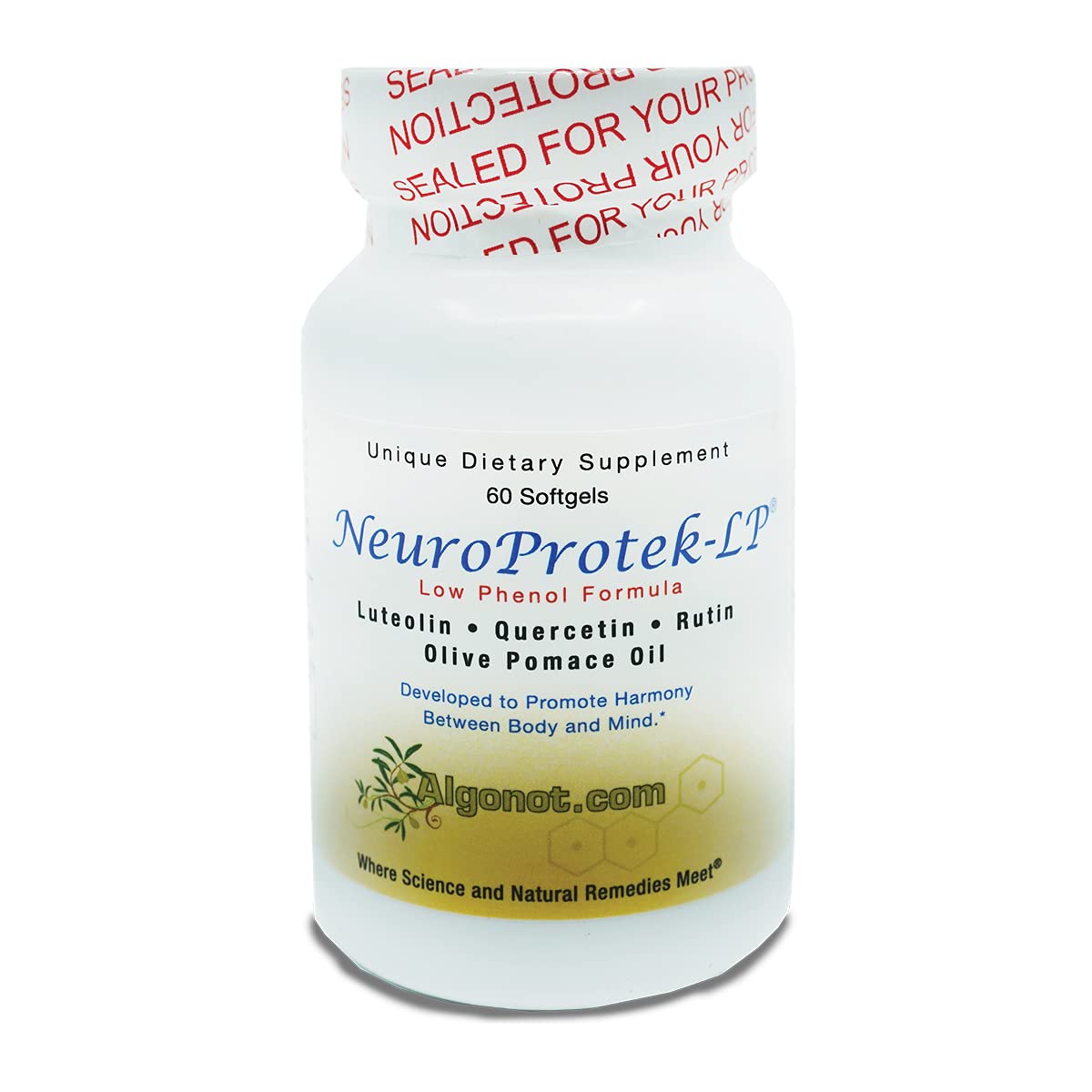
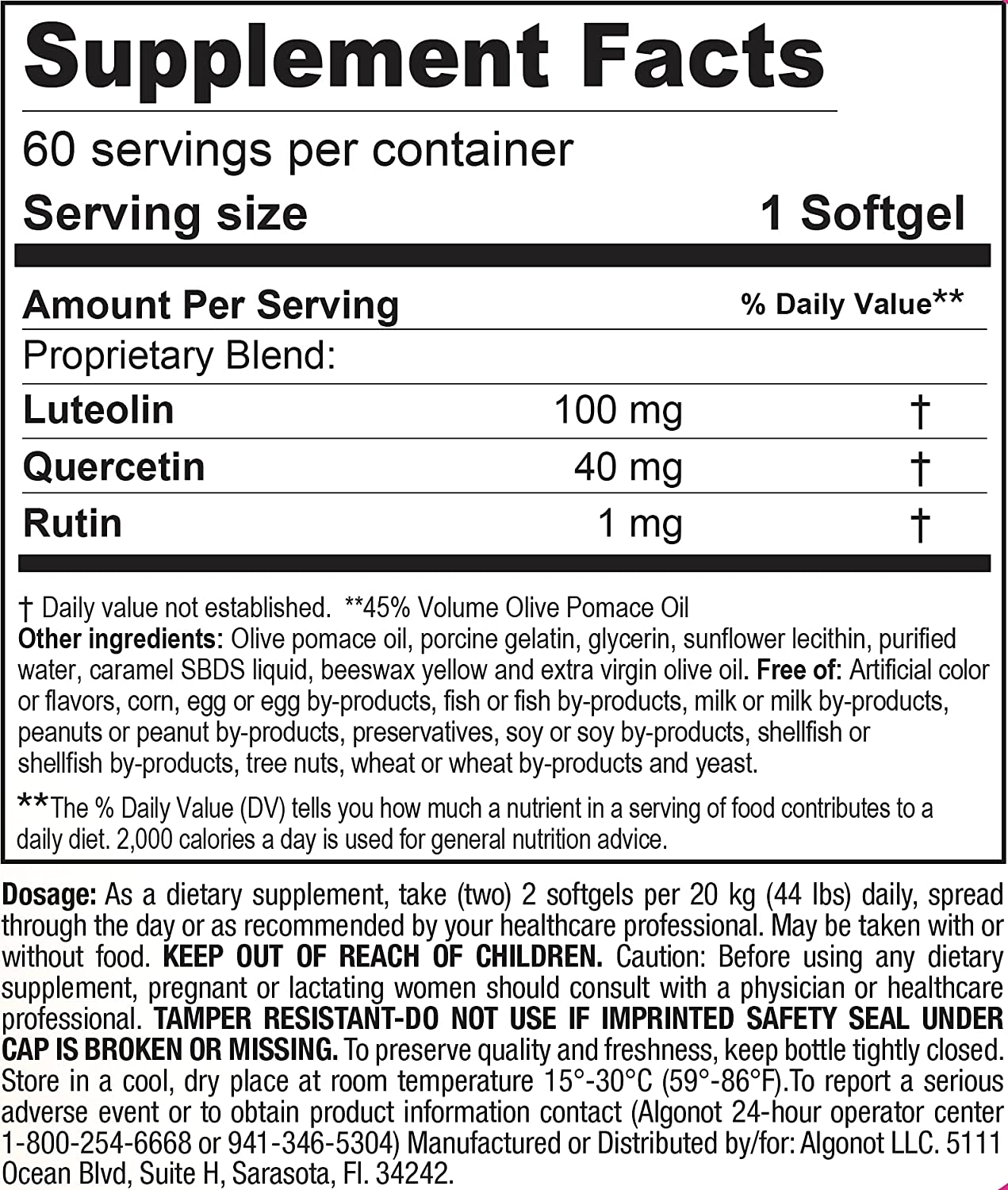
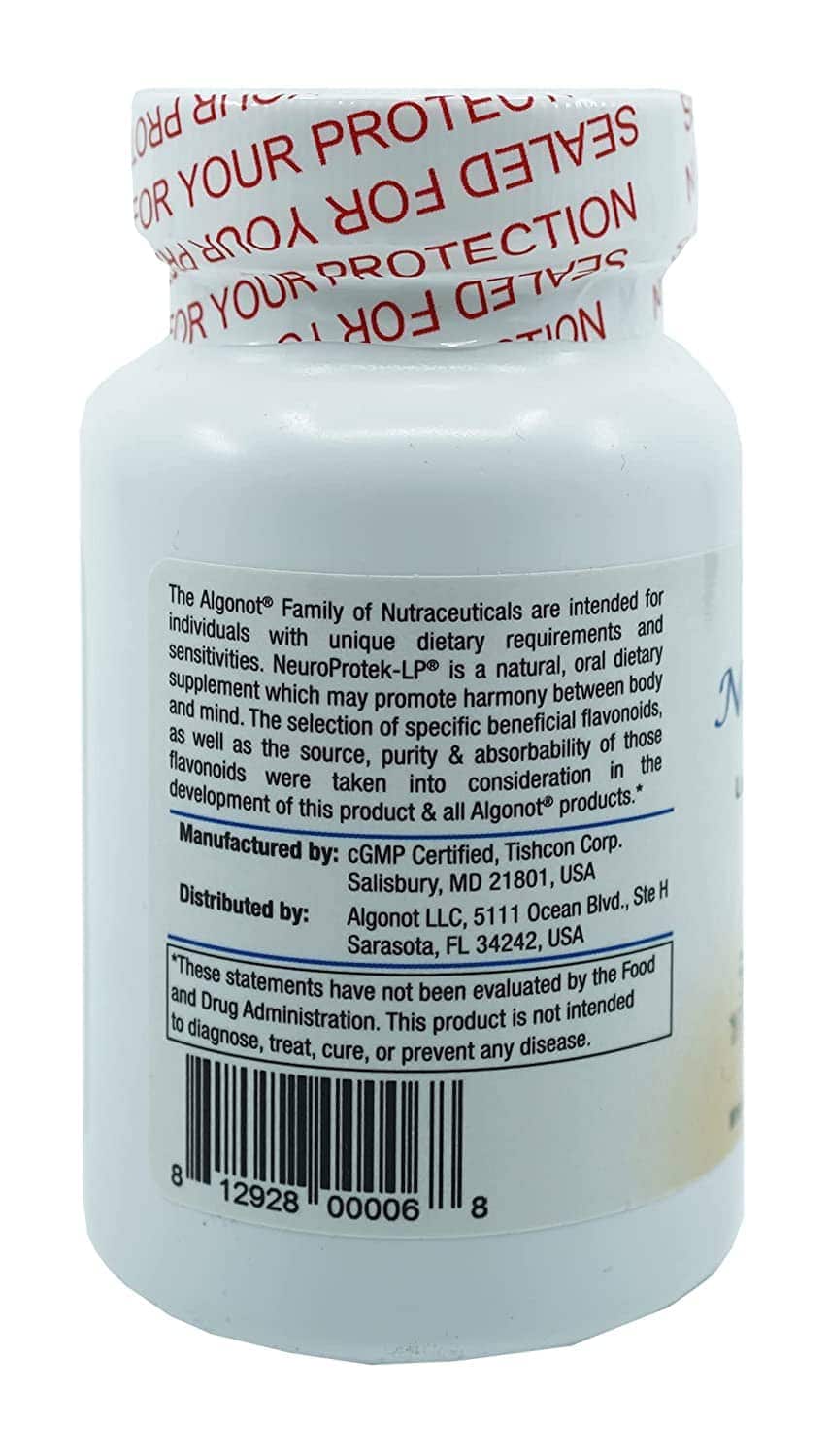

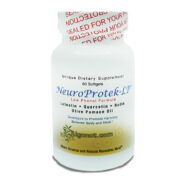
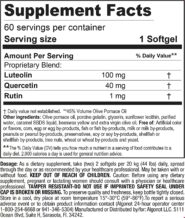


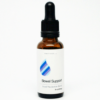
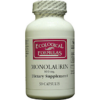
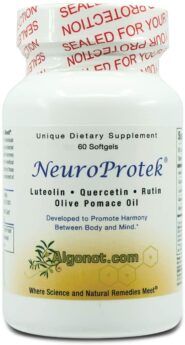
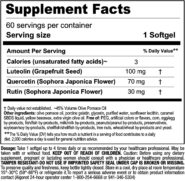
Reviews
There are no reviews yet.